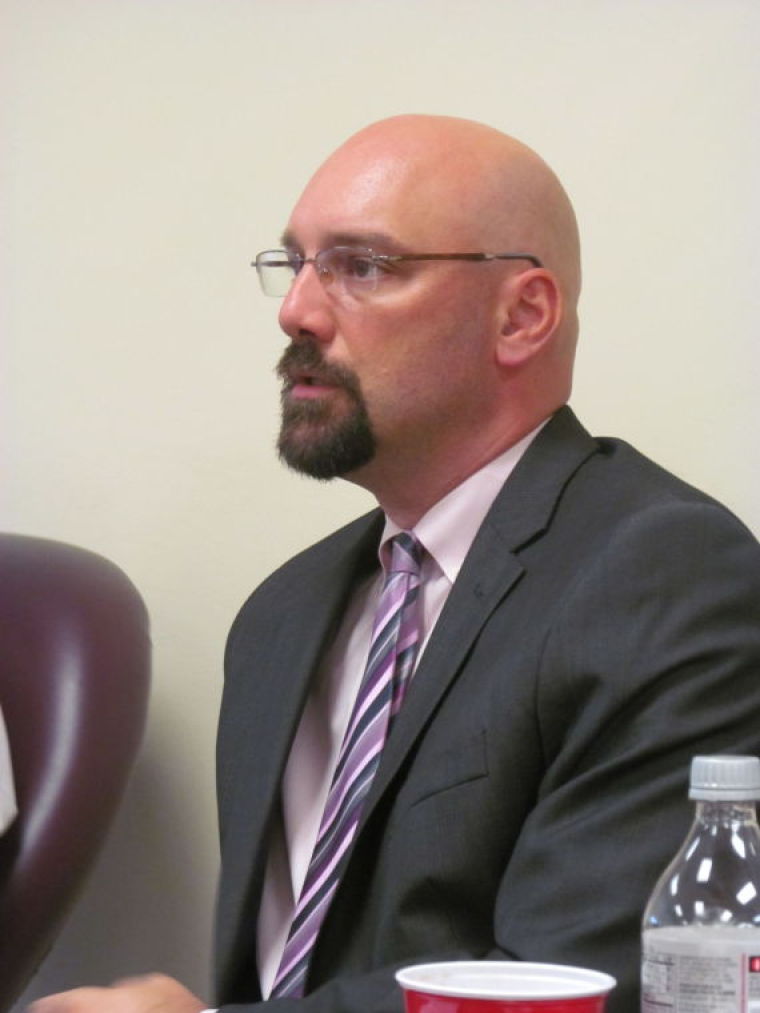The Mineola school district’s tax levy will see a state-mandated decrease this year, district officials said Thursday.
The confluence of a low cost-of-living increase, a flat tax base growth factor and short payments in lieu of taxes, or PILOTs, have set the district’s tax allowable levy at 0.01 percent, or about $10,000, below last year’s, Superintendent Michael Nagler said.
But given the fact that the district has not received the full amount of PILOT payments it expected this year, it may be calculating the levy based on money it won’t receive, Assistant Superintendent for Finance and Operations Jack Waters said.
“It’s a bit of a moving target that we’re dealing with,” Nagler said at the school board meeting on Thursday. “When these numbers have to be so exact and we don’t have the exact numbers, it’s very difficult.”
State aid will help the district maintain its programs despite the tight levy and an increase in expenses, Nagler said.
But district and school board officials said it’s still crucial that voters approve the budget to avoid using a contingency budget, which would have a larger tax levy but wouldn’t include new equipment purchases, Nagler said.
“I feel certain that people will say, ‘Oh, good, it’s less than zero. I don’t even have to show up,’” school board President Christine Napolitano said.
The PILOT payments are among several factors in a complex formula that calculates municipalities’ tax levies under the state property tax cap, which sets a ceiling on property tax increases at the lower of 2 percent or the consumer price index, 0.12 percent this year.
Part of the formula is the district’s prior-year tax levy, reduced from about $80 million to $78.8 million in September after Long Island Power Authority properties were removed from Nassau County tax rolls. The district used the lower levy in the formula, Nagler said.
LIPA was to pay the difference, about $1.2 million, as a PILOT, but the first-half payments made in January were about $30,000 less than expected, Waters has said.
The county put LIPA properties on a PILOT plan for the first time this year to comply with the 2013 LIPA Reform Act, County Attorney Carnell Foskey has said.
In November, LIPA paid about $3.7 million in first-half PILOTs less than the county billed it, invoking a provision in the LIPA Reform Act saying its PILOT payments can’t increase more than 2 percent over the previous year.
In lawsuits, more than 40 Nassau school districts say the county should cover the shortage under the County Guarantee. But county officials have said there is no such obligation under the guarantee, and LIPA has maintained it is following state law.
The suits in Nassau County Supreme Court are expected to settle the question of who will make the school districts whole for the PILOT money.
The Mineola school district was also set to receive 70 percent of the total PILOT payments from three residential developments in Mineola — about $590,000, Waters said — with the rest going to other municipalities that collect property taxes on them.
That percentage was reduced, Waters said, and based on first-half payments, the district will receive $45,000 less than expected this year.
The percentages of PILOT payments for the three properties were reduced because the Village of Mineola updated its assessed property values faster than the county and “at significantly greater amount” than the county’s assessed value, said Thomas Burke, an accountant in the county assessor’s office.
“In the future, when everything is finished, the percentages will normalize,” said Brian Nevin, a spokesman for County Executive Edward Mangano, in an email.
Waters said the district can modify its tax levy calculation to account for changes in PILOT income before July 1, the start of the new fiscal year.
But the levy can’t change if the district doesn’t learn about changes to PILOTs before then, he said.
Part of the tax levy formula multiplies the prior year’s levy by a tax base growth factor, a figure that accounts for additions to the district tax rolls.
The growth factor, though, does not incorporate buildings that pay PILOTs rather than property taxes, Waters has said, such as Mineola’s residential developments.
“All the growth in the community is not reflected in this number,” Nagler said. “We’re hopeful that that will be getting changed and any new construction will be reflected, but for the upcoming school year, it’s a flat zero across the board.”
The district also saw a $75,000 decrease in the amount of expenses the levy formula exempts from the tax cap.
While a full budget has not been released, Nagler said district expenses are set to increase by about $370,000, with rises in health care costs, salaries and worker’s compensation expenses.
The $267,000 in state aid the district expects to receive this year, plus $200,000 it received last year but did not add to the budget, will cover those costs, resulting in no cuts to district programs, Nagler said.
Nagler said it’s important the board still encourage voters to pass the budget with a property tax decrease.
If it fails, he said, the district us a contingency budget with no change in the tax levy that’s governed by regulations that would require the elimination of new equipment purchases.
“Although it’s a negative, I think we’re going to be okay, but (it’s) very, very important that we still get people out to vote yes for that negative number,” Nagler said.
Mineola school district residents will vote on the budget May 17.



